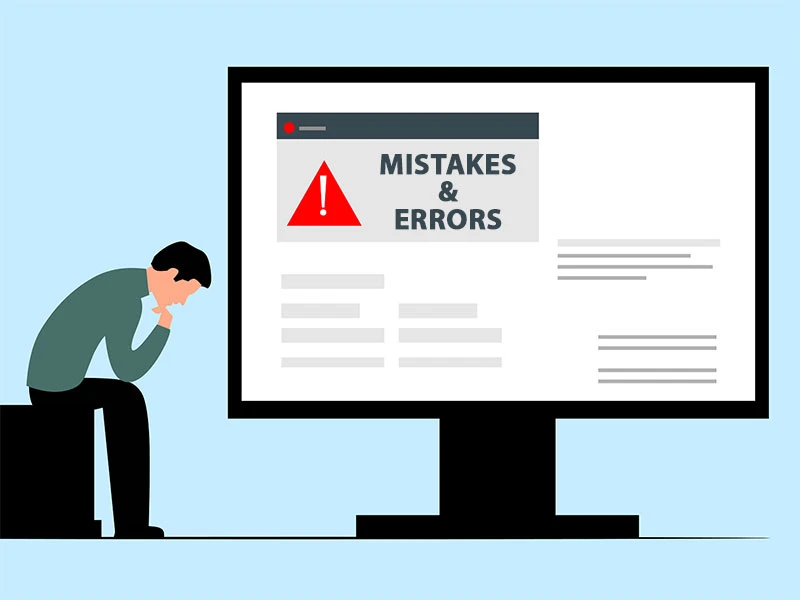The Complete Guide to Intraday Trading for Beginners

What is Intraday Trading?
Intraday trading, or day trading, refers to buying and selling financial instruments like stocks, options, commodities, etc, within a single trading day. Unlike long-term investing, where stocks are held for extended periods, in intraday trading, positions are opened and closed within a single market session. The primary objective is to capitalize on short-term price changes, aiming to profit from fluctuations in the market throughout the day. This strategy involves quick decision-making and requires traders to closely monitor market trends, making rapid trades based on technical analysis, market news, and indicators.
The concept of intraday trading revolves around the idea of taking advantage of price movements within the same day. Traders aim to profit by buying at lower prices, selling high or short-selling high, and covering at a lower price within the trading hours. The time horizon is significantly shorter than swing trading or long-term investing, often ranging from minutes to hours. This trading style requires a deep understanding of market trends, technical analysis tools, and the ability to react swiftly to changes in stock prices. It's a fast-paced approach that demands discipline, risk management, and a focused strategy.
Key Differences from Other Trading Styles
| Aspect | Intraday Trading | Other Trading Styles |
|---|---|---|
| Time Horizon | Positions opened and closed within the same day. | Longer holding periods, ranging from days to years. |
| Objective | Profiting from short-term price movements during the day. | Seeking larger price swings or long-term appreciation. |
| Trading Frequency | Involves multiple rapid trades within a single day. | Fewer trades made over more extended periods. |
| Risk Management | Immediate decision-making and precise risk management due to the shorter timeframe. | More time to adjust to market fluctuations and potentially more relaxed risk management. |
| Analysis and Strategy | Relies heavily on technical analysis and rapid decision-making. | Mix of fundamental and technical analysis, with more time for strategic planning. |
| Market Monitoring | Constant monitoring of market movements throughout the trading day. | Less frequent monitoring due to longer holding periods. |
Advantages of Intraday Trading
- Quick Profits Potential: Intraday trading offers quick profits as positions are opened and closed within the same trading day. Traders can capitalize on short-term price movements, potentially increasing profitability with the right strategies and market understanding.
- Reduced Overnight Risks: As trades are closed before the market closes, there's a lower exposure to after-hours market risks, reducing the impact of unexpected developments overnight. This characteristic of intraday trading minimizes overnight market exposure.
- Flexibility and Adaptability: Intraday traders enjoy flexibility. They can quickly adjust to shifts in market conditions, trying different strategies, stocks, and indicators. This flexibility enables traders to experiment and find what suits their style and risk tolerance, contributing to their adaptability in fast-paced markets.
Common Risks Involved
- Market Volatility: It is one of the key risks in intraday trading is the volatile nature of markets. While rapid price movements provide profit opportunities, inadequate management can result in substantial losses due to these fluctuations.
- Leverage Impact: Leveraging amplifies both profits and losses. While it can magnify gains, it also escalates the risk of substantial losses. Strict risk management is crucial for traders utilizing leverage in intraday trading.
- Transaction Costs and Overtrading: Transaction costs, including brokerage fees and taxes, can significantly diminish profits, especially for frequent traders. Moreover, the risk of overtrading - deviating from strategies or risking too much per trade - can lead to emotional stress and diminished decision-making.
Understanding and managing these key risks associated with intraday trading is pivotal. Traders should adopt disciplined strategies, implement stop-loss orders, manage leverage cautiously, and steer clear of emotional trading decisions to navigate these challenges effectively. This awareness enables traders to approach intraday trading with a well-structured plan and a realistic perspective on its potential and challenges.
Choosing Stocks for Intraday Trading

Among the many stocks available for trading on a stock exchange, choosing the right ones for intraday trading is paramount. To make informed selections, consider the following criteria: -
Criteria for Selecting Tradable Stocks
- Volatility and Liquidity: When selecting stocks for intraday trading, volatility is vital. Look for stocks with price movements that allow for potential short-term gains. Additionally, liquidity is crucial. Stocks with high liquidity ensure smooth entry and exit from positions without impacting prices significantly.
- Sector Analysis: Consider focusing on specific sectors or industries. Certain sectors exhibit more intraday volatility, providing better opportunities for traders. Conduct thorough sector analysis to identify these trends.
- Historical Patterns: Examining a stock's historical price patterns can provide valuable insights. Identifying recurring trends or patterns can aid in predicting potential price movements and inform decision-making.
Importance of Liquidity and Volume
- Liquidity's Role: Liquidity is vital in intraday trading as it ensures enough buyers and sellers in the market. This facilitates swift transactions without significant price changes. Stocks with lower liquidity might lead to challenges in executing trades at desired prices.
- Volume Impact: Volume represents the total count of shares traded for a specific stock within a given timeframe. Higher volume stocks usually have more active traders, contributing to better price discovery and smoother trade execution.
- Avoiding Illiquid Stocks: Illiquid stocks with low trading volumes may lead to difficulty buying or selling positions at desired prices. Traders often avoid these stocks to mitigate the risk of price manipulation or getting stuck due to a lack of trading activity.
Intraday Trading Strategies
- Scalping Strategy: Scalping involves making numerous small trades, capitalizing on minimal price movements. Traders executing this strategy aim for quick profits, often within seconds or minutes of opening a position.
- Momentum Trading: It focuses on stocks exhibiting strong upward or downward movements. Traders ride these trends, entering positions to benefit from continued price momentum.
- Breakout Trading: This strategy involves identifying price levels where a stock is expected to experience substantial movement, breaking through a support or resistance level. Breakout traders aim to profit from these price surges.
Building Your Customized Strategy
- Understanding Risk Tolerance: Customize your strategy based on your risk tolerance. Some traders prefer high-risk strategies for potential high returns, while others opt for more conservative approaches.
- Technical Analysis Tools: Utilize various technical analysis tools, such as moving averages, RSI, MACD, etc., to build a strategy aligned with your trading style and objectives.
- Backtesting and Adjustment: Before implementing your strategy in live markets, conduct backtesting. This involves testing your strategy using historical data to assess its effectiveness. Based on the results, adjust and improve your approach to build a robust, personalized strategy.
Selecting stocks for intraday trading involves a blend of technical analysis, understanding market dynamics, and aligning strategies with personal preferences and risk tolerance. By focusing on criteria like volatility, liquidity, and historical patterns, traders can narrow down their options for more informed trading decisions. Implementing suitable intraday strategies tailored to individual goals further enhances the chances of success in this fast-paced trading arena.
Practicing Intraday Trading
Practicing intraday trading allows individuals to develop their skills, test strategies, and gain the confidence needed to successfully navigate the complexities of short-term trading.
Paper Trading and Simulators
- Understanding Paper Trading: Paper trading involves practicing trades without risking real money. It's a simulation where traders use virtual funds to execute trades based on actual market conditions. This method allows beginners to get a feel for the market without financial risk.
- Simulators as Learning Tools: Trading simulators replicate live market conditions, providing a risk-free environment for beginners to practice different strategies. They offer valuable insights into the market's operations and allow traders to test their strategies before executing them in live markets.
- Benefit of Simulated Trades: Engaging in paper trading or simulators helps traders gain familiarity with trading platforms, understand order types, and develop confidence in their decision-making abilities without the pressure of actual financial loss.
Importance of Practice
- Building Confidence: Regular practice is crucial for intraday traders. Practicing various strategies, analyzing market movements, and executing simulated trades helps build confidence in making real-time decisions.
- Enhancing Skills: The more practice traders engage in, the better they become at analyzing market trends, interpreting technical indicators, and identifying potential entry and exit points. Practice sharpens these skills essential for successful intraday trading.
- Risk Mitigation: Practicing in a simulated environment allows traders to experiment with different strategies and assess their effectiveness. This helps minimize risks when transitioning to live trading by allowing traders to refine their approach.
Using Virtual Trading Platforms
- Accessibility and Convenience: Virtual trading platforms offer accessibility to market data and tools necessary for practice. They provide a user-friendly interface where traders can execute trades and track their real-time performance.
- Learning in Real Market Conditions: These platforms replicate actual market scenarios, enabling traders to experience real-time price movements and market volatility. This experience is invaluable for preparing traders for live market conditions.
- Tracking Progress: Virtual platforms usually come with features that allow traders to track their performance, analyze their trades, and identify areas for improvement. This tracking aids in a continuous learning process.
Risk-Free Trading Techniques
- Starting with Small Positions: In the initial stages, traders should consider starting with small positions to limit potential losses while gaining experience. This cautious approach helps understand intraday trading dynamics without substantial financial risks.
- Learning from Mistakes and Successes: Every trade, whether in a simulated or live environment, offers lessons. Analyzing mistakes and successes helps traders refine their strategies and make informed decisions in subsequent trades.
- Emphasizing Risk Management: Risk-free techniques involve prioritizing risk management strategies like setting stop-loss orders and adhering to predetermined risk levels, ensuring protection against significant losses.
Real-Time Trading Execution

Market Open Preparation
- Understanding Pre-Market Analysis: Pre-market analysis involves evaluating market indicators before the official opening to anticipate potential price movements. This phase allows traders to review overnight developments, news, and pre-market trading activity, providing crucial insights into the market sentiment.
- Planning Trading Strategies: Successful intraday trading often starts with a well-thought-out plan. Setting aside time for pre-market planning enables traders to outline potential trades, identify key levels, and determine the points to enter and exit trades based on their analysis.
- Assessing Market Sentiment: During the pre-market phase, traders gauge market sentiment, considering economic news, global events, and stock-specific news. This information aids in making informed decisions once the market opens.
Setting Trading Goals for the Day
- Defining Clear Objectives: Setting trading goals helps maintain focus and discipline. Whether aiming for a specific profit target, limiting losses, or a certain percentage of successful trades, clear objectives provide a roadmap for the day's trading activities.
- Adapting to Market Conditions: While having goals is crucial, being flexible is equally important. Market conditions might change unexpectedly. Thus, traders need to be adaptable and adjust their goals based on the evolving market dynamics throughout the day.
- Managing Expectations: Establishing realistic expectations aligns with setting goals. Acknowledging that not every trade will be profitable and that losses are part of trading helps maintain a practical mindset and avoid emotional decision-making.
Executing Trades
- Understanding Order Types: Different order types serve various purposes in intraday trading. Limit orders, market orders, and stop-loss orders are common, each having its function. Traders need to grasp these types and their implications before executing trades.
- Effective Execution: Executing trades promptly and accurately is vital in intraday trading. Traders must be decisive in entering and exiting positions based on their strategies and pre-defined trade parameters.
- Implementing Risk Management: Alongside trade execution, managing risk is paramount. Utilizing stop-loss orders to cap potential losses and adhering to risk management principles protects capital and ensures prudent risk control throughout trading activities.
Managing Trades Throughout the Day
- Continuous Monitoring: Intraday traders must constantly monitor their positions and the overall market throughout the trading day. Staying vigilant allows traders to adjust their strategies, manage risk, and capitalize on emerging opportunities.
- Adapting to Changing Scenarios: Markets are dynamic and often unpredictable. Traders ought to be ready to adjust their strategies according to changing market conditions or unexpected developments, ensuring flexibility in their approach.
- Recording and Reviewing Trades: Keeping a trading journal to document trades, strategies, and outcomes enables traders to review their performance. This analysis aids in identifying patterns, strengths, weaknesses, and areas for improvement, fostering continuous learning and growth.
Common Mistakes and Pitfalls

Avoiding Overtrading
- Defining Overtrading: Overtrading refers to excessive trading beyond one's strategy or capacity, often driven by emotions or a desire to recover losses quickly. This mistake can increase transaction costs, emotional exhaustion, and poor decision-making.
- Understanding Trading Frequency: Recognizing the frequency of trades is crucial. Overtrading occurs when a trader excessively enters and exits positions, deviating from their planned strategy. Maintaining discipline in the number of trades executed within a specific timeframe is essential.
- Signs of Overtrading: Indications of overtrading include frequent trades, impulsive decision-making, and deviation from predefined strategies. Due to market overexertion, traders may experience emotional stress, fatigue, and reduced effectiveness.
Risk Management Errors
- Not Using Stop-Loss Orders: Failure to implement stop-loss orders is a significant risk management error. These orders help limit potential losses by automatically closing positions at predetermined levels. Not utilizing stop-loss orders exposes traders to substantial losses when trades move against them.
- Ignoring Diversification: Neglecting portfolio diversification is another error. Concentrating all investments in a single stock or sector increases vulnerability to market volatility. Diversification helps spread risks across various assets, reducing overall portfolio risk.
- Preventing Risk Management Errors: Implementing risk management practices involves setting precise risk tolerance levels, adhering to stop-loss orders, and diversifying portfolios. Being disciplined in following these risk management strategies helps safeguard against substantial losses.
Conclusion
In conclusion, while intraday trading presents opportunities for financial gains, it demands vigilance, discipline, and a deep understanding of the market. By avoiding common pitfalls and consistently refining strategies, traders can navigate this dynamic landscape more effectively and enhance their chances of success in intraday trading.








